Montmartre
Explore the area that was at one time the home of luminary thinkers and artists like Dalí and Picasso. The highlight of your trek will be the fabulous Sacré-Cœur basilica!
What you need to know about Montmartre
City: Paris, France.
Transport links: Abbesses (Line 12 - Green). The station brings you out about 100 metres from the funicular that will take you up towards the Sacré-Cœur basilica.
Nearby attractions: Sacré-Cœur Basilica, Moulin Rouge.
Access: Montmartre is an area (18th arrondissement) as opposed to a specific landmark or venue. There is therefore no cost to visit it. If you are not fussed to go into the attractions that are available in the area then it is a great place to just chill and unwind.
Fact: The area's name translates to Mount of the Martyr, said to be named after Saint Denis who was the first bishop of Paris. He was supposedly beheaded on the hill in 250AD.
Montmartre to most people means Sacré-Cœur
The imposing Sacré-Cœur basilica looms large at the highest point of Montmartre.
It is an impressive building but is most stunning on the inside when the stained glass and artwork that adorn the walls is strikingly large and imposing. The angelic art seems to almost engulf you when you stand at the bottom of the aisle and face the altar. It is a seriously impressive example of Christian iconography.
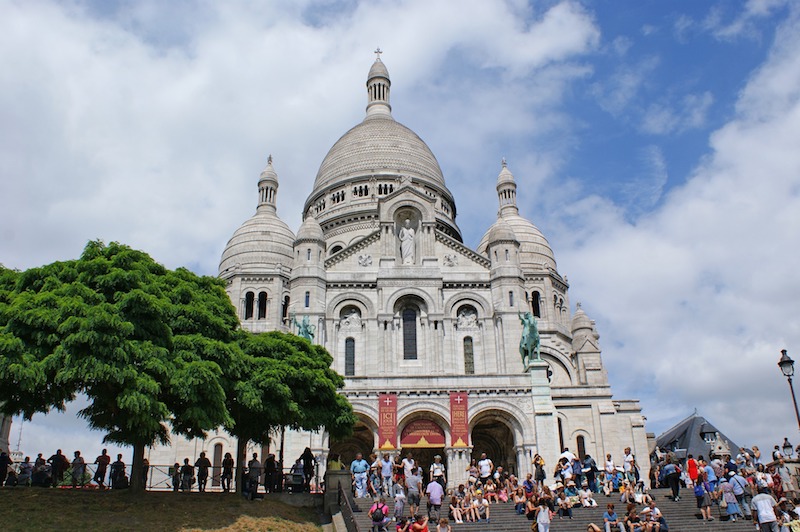
Sacré-Cœur Basilica stands proudly as the focal point of Montmartre.
The contemporary art in Montmartre is also brill
The big house of worship wins the award for sheer scale and size. Contemporary locals however express themselves whole host of street art, often with a cheeky or satirical side that is utterly Parisian in its impish execution.
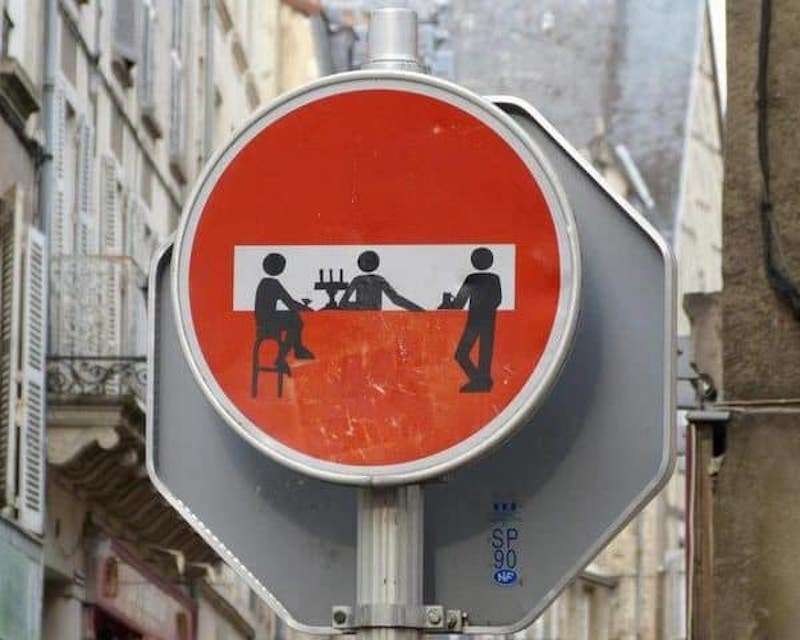
A Montmartre road sign becomes a street art bar scene.
Some of the street art is political in content, some are done for humorous reasons and others are just done for hedonistic fun. It all adds to the character of an area that has welcomed artists and free spirits for over a century.
Montmartre is best described as a kindred spirit for similar areas in other cosmopolitan cities. New York has the Village, London has Soho. These areas may all be distinct but share an ability to curate and harness the artistic flair and Joie de Vivre that so many great and good denizens have within them.
Those who have moved to the area in recent years are known as bourgeois Bohemians or "bobos" for short. They are seen by older, long-time residents as people who have made a lot of money and moved into the area but lack the real attachment to what Montmatre has long stood for.
The older residents - the true "Montmartrois" - remain proud and tied to their identity that is somewhat different and separate from the rest of Paris. Historically that difference was more striking - they even decided to set up their own governance system called La Commune back in 1871. That move to have more independence from Paris and France was short-lived and only lasted about three months.
This is why you will often find street art in the area. It is not only a form of artistic outlet and expression but also at times a symbol of protest when it includes the words "Bobos, cassez-vous" which is an unsubtle way of telling the new generation to leave.
The locals are very friendly to visitors who travel to the area it must be said. It is a really cooky, interesting part of Paris that offers something of an alternative to the conventional attractions like the Eiffel Tower and the Louvre Museum.
Spend the time to see the alternative side of Paris. It won't disappoint!
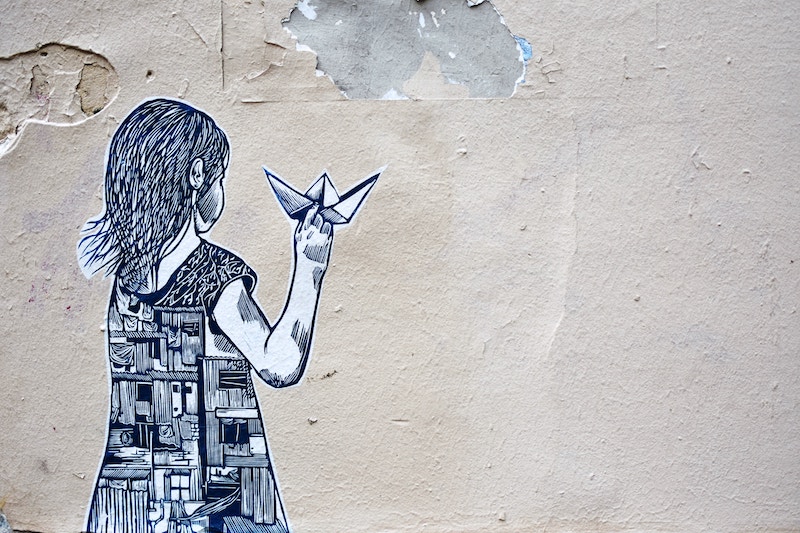
A street art child playing on a building wall in Montmartre.
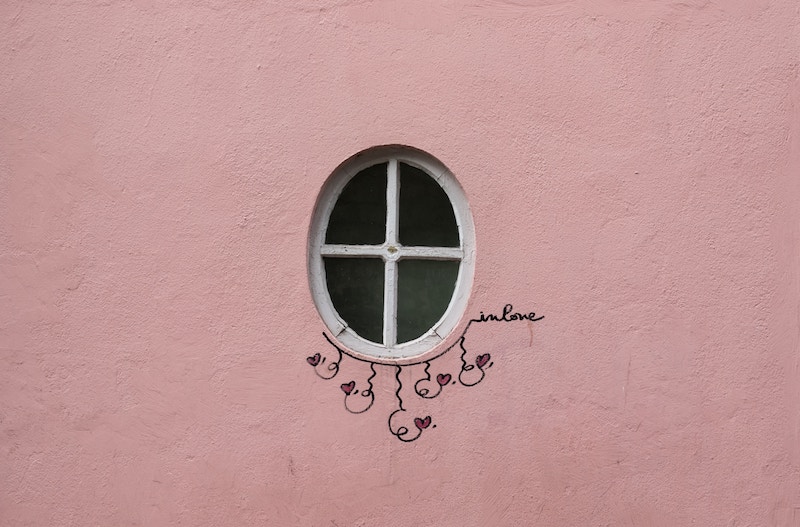
Street art love birds flock around a Montmartre window.
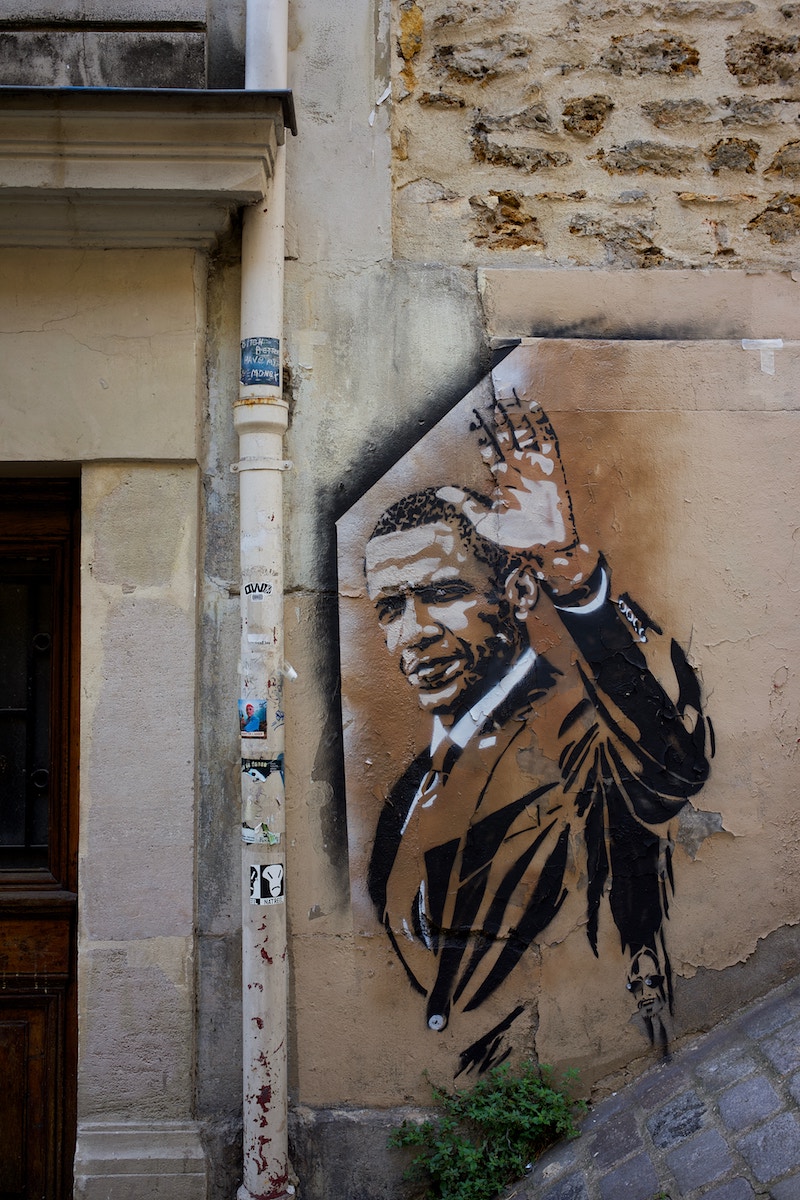
Obama features in impromptu street art on a Montmartre street.
